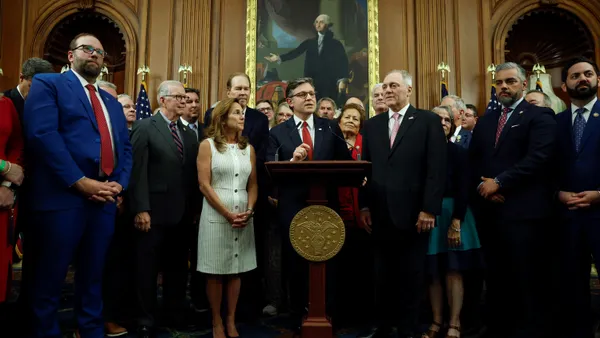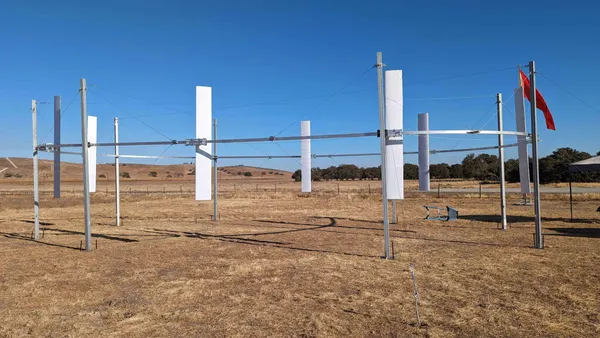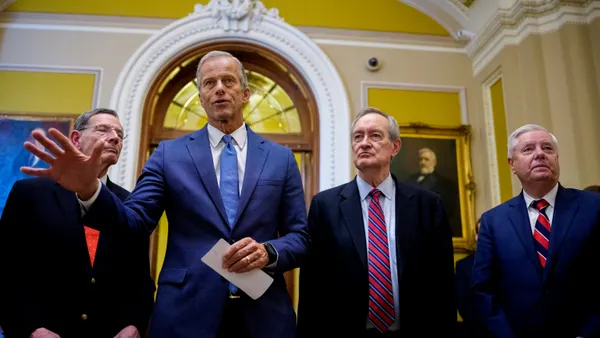Dive Brief:
-
The future of fixed-price power purchase agreements (PPAs) is uncertain as the U.S. solar market seeks to cope with a sudden, extreme shortage of panels on the heels of price hikes and ongoing interconnection delays, developers on a panel hosted by Edison Energy said Wednesday.
-
Median solar PPA prices in the U.S. are 24% higher than at the beginning of 2021, according to Mary Kate Francis, senior director of Energy Sourcing for Edison Energy, a subsidiary of Edison International. Surging demand, rising commodity and transportation costs, and policy uncertainty were the primary drivers of the increase, she said.
-
Decreased access to major solar suppliers in Southeast Asia, triggered by a U.S. Department of Commerce investigation into potential tariff circumvention has resulted in an inadequate supply of solar panels in the U.S, according to Dan Rodriguez, director of origination for National Grid Renewables. Developers have been forced to delay projects amid the supply crunch, and some projects may yet be canceled altogether, he said.
Dive Insight:
Solar developers expressed limited optimism on Wednesday for a quick resolution to shortages in the solar market, triggered by ongoing challenges such as extended interconnection queues and exacerbated by the Department of Commerce investigation in Southeast Asia.
“I think I could throw darts better than I could anticipate [what solar prices will look like] in 2025,” Lisa Richey, business development manager for Apex Clean Energy, said. “And I’m really bad at darts.”
The 25th percentile price for solar PPA offers in most U.S, markets increased between the fourth quarter of 2021 and the first quarter of 2022, according to the Q1 2022 Renewables Market Update by Edison Energy. Solar projects in the Midcontinent Independent System Operator region did see prices fall by 2%, according to the report, while Southwest Power Pool and PJM Interconnection saw the largest increases, with the two regions tied at 14%. Overall, PPA prices have seen an upward trend over the past two years, jumping 24% during 2021, according to Francis.
Future price trends remain uncertain, according to developers on Wednesday's panel. In PJM, which had a 1% on-time rate for interconnection requests in 2020, queue reform offers some hope of relief — but only for some developers, Richey said. A solution proposed by the system operator would qualify some projects for a “fast track,” but other projects may not see their case resolved until 2025 or beyond, she said.
Meanwhile, as developers race to get their projects finished ahead of potential tax credit phase-outs, suppliers are pushing back the dates for their next delivery of solar panels, according to Rodriguez.
Rodriquez estimated that 80-90% of the solar panels used in the U.S. come from the four Southeast Asian countries that are the subject of the Commerce Department investigation launched in March. While alternatives do exist, he said, alternative manufacturers are too small to supply U.S. panel demand, which could force developers to delay or even cancel projects.
The developers who have fared best are those that “moved very decisively in a market that is in a state of panic right now,” Rodriguez said, by locking down access to those limited supplies early. Everyone else, he said, will be forced to prioritize which projects are allocated panels, and which are not.
Rodriguez recommended that buyers looking to procure renewable energy focus on more mature projects. Those furthest along in the process are the most likely to be allocated panels by developers, he said.













